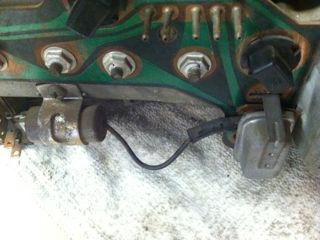mjb765
Well-Known Member
First--I am just making sure on this one...if you ground the wire coming off of the fuel tank sending unit and the gauge reads full, but only reads 3/4 when connected--even if the tank is full, then I am guessing the sending unit is bad?
And second...The ammeter is bouncing between either side of the +20 line on anthing over 2000 rpm. Checked voltage at the battery and it's 13.4 at idle and sometimes can hit 15v when I rev it. When I say bouncing--I don't mean just moving back and forth--this thing is violently wiggling, or jumping. Just happen to replace the battery today since it failed load test...but that didn't change the gauge movement. Any ideas?
And second...The ammeter is bouncing between either side of the +20 line on anthing over 2000 rpm. Checked voltage at the battery and it's 13.4 at idle and sometimes can hit 15v when I rev it. When I say bouncing--I don't mean just moving back and forth--this thing is violently wiggling, or jumping. Just happen to replace the battery today since it failed load test...but that didn't change the gauge movement. Any ideas?

















